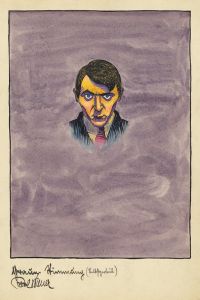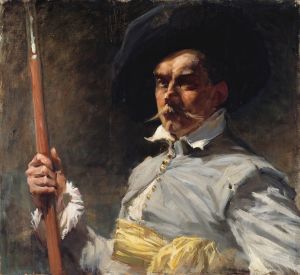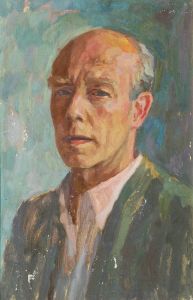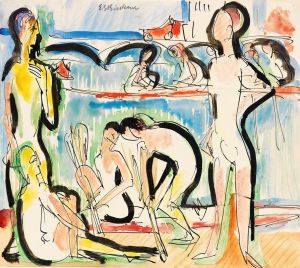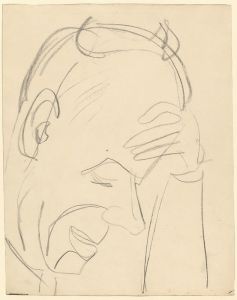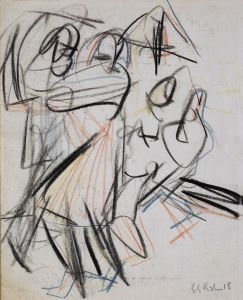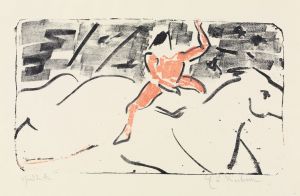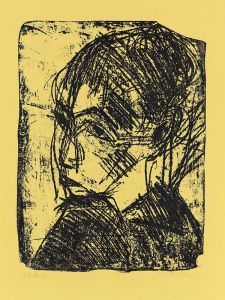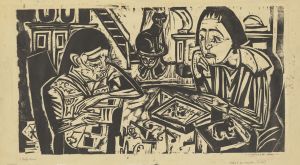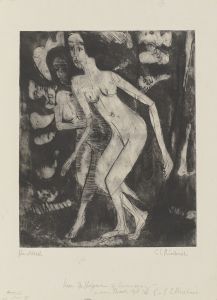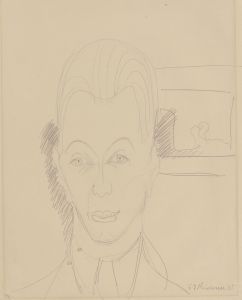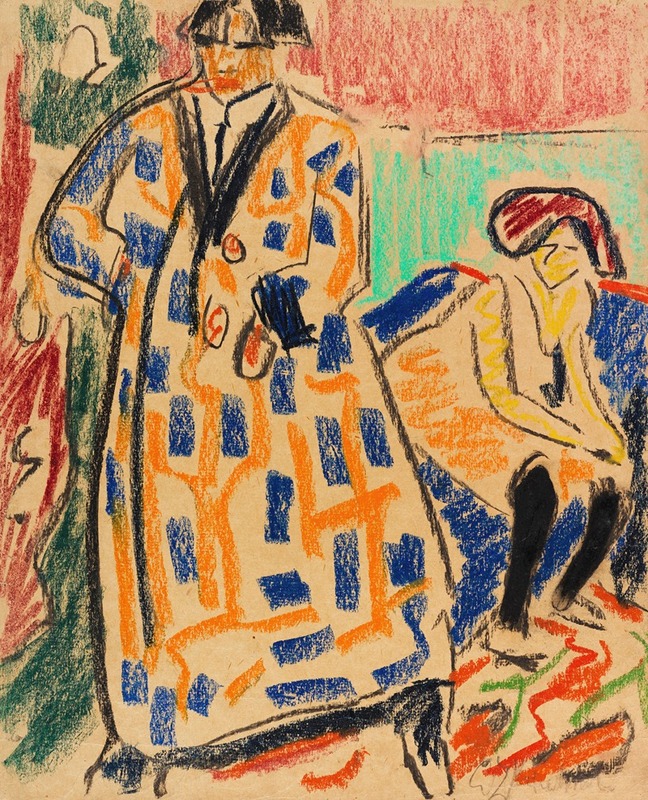
Selbstbildnis mit Modell
A hand-painted replica of Ernst Ludwig Kirchner’s masterpiece Selbstbildnis mit Modell, meticulously crafted by professional artists to capture the true essence of the original. Each piece is created with museum-quality canvas and rare mineral pigments, carefully painted by experienced artists with delicate brushstrokes and rich, layered colors to perfectly recreate the texture of the original artwork. Unlike machine-printed reproductions, this hand-painted version brings the painting to life, infused with the artist’s emotions and skill in every stroke. Whether for personal collection or home decoration, it instantly elevates the artistic atmosphere of any space.
"Selbstbildnis mit Modell" (Self-Portrait with Model) is a notable painting by the German expressionist artist Ernst Ludwig Kirchner, created in 1910. Kirchner was a leading figure in the German Expressionist movement and a founding member of the influential artist group Die Brücke (The Bridge), which sought to create a new form of artistic expression that bridged traditional academic art and modern avant-garde styles.
The painting "Selbstbildnis mit Modell" is a striking example of Kirchner's expressionist style, characterized by bold colors, dynamic compositions, and emotional intensity. In this work, Kirchner presents himself alongside a female model, a common theme in his oeuvre that reflects his interest in exploring the complexities of human relationships and the artist's role in society.
Kirchner's use of color in "Selbstbildnis mit Modell" is particularly noteworthy. He employs a vivid palette, with strong contrasts between the figures and the background, to convey a sense of immediacy and emotional depth. The brushwork is loose and expressive, typical of Kirchner's style, which often emphasized the artist's subjective experience over realistic representation.
The composition of the painting is carefully constructed to draw the viewer's attention to the interaction between the artist and the model. Kirchner places himself prominently in the foreground, gazing directly at the viewer, while the model is positioned slightly behind him, her posture and expression suggesting a sense of intimacy and collaboration. This arrangement not only highlights the personal connection between the two figures but also underscores Kirchner's exploration of the artist-model dynamic, a recurring theme in his work.
"Selbstbildnis mit Modell" also reflects Kirchner's interest in the psychological aspects of portraiture. By presenting himself in the act of creation, Kirchner invites the viewer to consider the complexities of the artist's identity and the nature of artistic inspiration. The painting can be seen as a meditation on the creative process, with Kirchner using the self-portrait as a means of self-exploration and self-expression.
The historical context of the painting is significant as well. Created during a period of great social and cultural change in Germany, "Selbstbildnis mit Modell" embodies the spirit of innovation and experimentation that characterized the early 20th century. Kirchner and his contemporaries in Die Brücke were at the forefront of this artistic revolution, challenging traditional norms and seeking new ways to express the human experience.
Today, "Selbstbildnis mit Modell" is regarded as an important work within Kirchner's oeuvre and the broader context of German Expressionism. It is held in high esteem for its bold exploration of color, form, and emotion, as well as its insightful commentary on the role of the artist in society. The painting continues to be studied and appreciated for its contribution to the development of modern art and its enduring impact on subsequent generations of artists.





